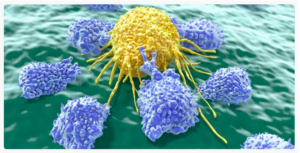

Thursday 02 May 2019,
by Claire Doyle
‘’If it were not for the great variability among individuals, medicine might as well be a science, not an art’’ Sir William Osler, 1892
In today’s world, much of research medicine relies on data derived from large randomised clinical trials and observational studies. However the idea of factors affecting inter-individual variability, specialised or personalised medicine has been around for over 100 years. The first mention of this originated with single nucleotide polymorphisms (SNPs) and microarrays and this has continued to be investigated with many key milestones along the way such as that of The Human Genome Project in 2000. So what exactly is ‘Personalised Medicine’? Personalised medicine (also known as personalised genomics medicine/ precision medicine) refers to looking at the whole demographic of a patient, integrating genetic and genomic data as well as clinical and environmental factors to come up with disease-prevention and treatment strategies.
How does genomic testing contribute to personalised medicine?
Genetic testing is a prime example of how personalised medicine is moving to the forefront of treatment for patients. According to Forbes more than 15 million customers have ordered genetic testing kits and this number is predicted to rapidly increase to 100 million by the year 2021. Digital is playing an integral role in bringing transparency and precision to healthcare data on a patient level as well as linking data with other indicators. A recent article in New Scientist describes the 10 year plan to expand digital healthcare and genetic testing in the NHS. While one of the main caveats to patients is the worry about who can access their genomic data online, the objectives of genomic testing are to create a positive, preventive behaviour in patients so they can better manage their health. A recent publication has described the testing of a digital ID tool (created by Counsyl) which is able to collect personal and family cancer history only (and not include other disease states) for first-, second- and third-degree relatives and is able to include 36 unique types of cancers (Bucheit et al., 2019).

Combination therapy, Immunotherapy and CAR-T
William Coley, in 1890, was one of the great pioneers of cancer immunotherapy—by treating patients with bacteria after surgery he was able to show that producing an immune response could play an important therapeutic role in cancer. Huge strides have been made in this area with the development of immune checkpoint inhibitors; the first being ipilmumab, followed by successful efficacious inhibitors such as the PD-L1 inhibitor atezolizumab. With constant ongoing trials for immunotherapies, the full clinical potential of this therapy still remains to be determined. However, along with immunotherapies comes the issue of immune-related adverse events for the patient. It has been suggested that by incorporating more personalised medicine approaches we may be able to minimise the immune-related adverse events (Maciejko et al., 2017). Interestingly, an example of a more personalised type of T-cell therapy is that of adoptive cell transfer in the form of chimeric antigen receptor T cell therapy or CAR-T therapy. CARs are artificial proteins used to redirect immune system cells to attack targets that are normally invisible to them. T cells are taken from the patient, are engineered to express cancer-specific antigens and are then administered back into the patient. CAR-T has been used as a method of treatment for B cell-related cancers such as multiple myeloma and acute lymphoblastic lymphoma (ALL) In a study by Stevanovic et al., 2015, three out of nine patients with metastatic cervical cancer, treated with CAR-T experienced complete regression. However, improvements are still required to enhance its effectiveness for treating solid tumours. Aside from challenges in scaling up, the key for the future success of these therapies stands in the follow-up and continuous assessment of the long-term disease in these patients.

Advancements in digital technology can greatly aid immunotherapies. For example, digital technology could help patients monitor their symptoms from home and report any side effects. Improvements in analysis by digital means could eventually predict those patients most likely to respond. Suzanne Wait, Managing Director of the Health Policy Partnership says that digital technology can play ‘’an important role in supporting equality of access to medicines by promoting a more ‘joined up’ approach to care and in helping to catch the disease early.’’
Role for digital and technology in Personalised Medicine?
The role of digital plays an important part in a patient’s journey from connecting with fellow patients to their specific drug treatments. Digital platforms such as smartphone apps can work in a unique way to capture the patients voice. Patients can vocalise their symptoms, feelings, their journey with their disease in both an active and passive way in real time.
The EU commission has put forward a set of measures to increase healthcare data sharing and ‘’enabling the digital transformation of health and care… empowering citizens and building a healthier society.’’ It outlines points on secure access to data, personalised medicine via shared data infrastructure as well as the use of digital tools. Aims of which are to allow faster access to patients of data for hopefully greater treatment outcomes.
Data mining to explore rare side effects and how best the patient will react to certain therapies will ultimately provide more effective, targeted therapies for the patient. New technologies in sequencing that further analyse big data sets are important for translational science. ‘Datafication’ of tissue in personalised medicine is hoped to come both from genomic data but also from the tissue images themselves in order to give more detailed information on the disease. Through the use of nanotechnology, devices and biosensors, that alert doctors where needed, can now be implanted within the body. 3D printing has revolutionised the way we see tissue and organ engineering. With the printing of the first 3D kidneys and now the liver, we can now realise the dream of the idea of producing ‘personalised organs’ on demand. Artificial intelligence (AI) also known as machine learning or deep learning can analyse vast amounts of data in a fast, efficient manner as well as coming across unpredicted patterns that can help with clinical outcomes.
To infinity and beyond: Personalised medicine and the future
So for the future, the hope is that by accumulating data via biosensors, analysing via AI and machine learning and transmitting via digital engagement on smart devices, people will always have access to personalised healthcare solutions. By gathering and analysing data in a smart way, we can better understand and treat patients in turn giving them more personalised care.
The surge of online pharmacies suggests that digital may play a role in every part of the patient journey right down to aiding in the distribution of medicine to the patient... ‘PillPack’, acquired by Amazon for 1 billion dollars, delivers personalised monthly supplies of medicines in a user-friendly dispenser along with labels and information on how to take them. This no doubt makes it more convenient for the patient and any way we can make it a more painless experience in what is very difficult, arduous time for a patient should be considered.
Finishing with another quote by Sir William Osler very relevant today for the evolution of personalised medicine and the new found patient focus approach…
‘’The good physician cares for the disease; the great physician cares for the patient.’’
At nitro we work closely with HCPs, patients and pharmaceuticals with the aim to improve patient outcomes via digital. Contact us to learn more.

